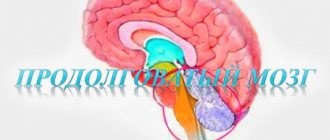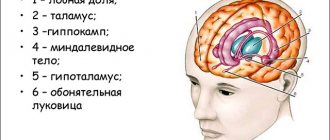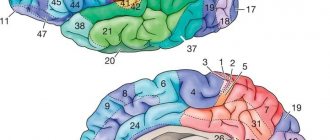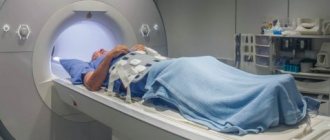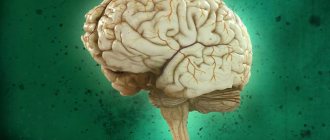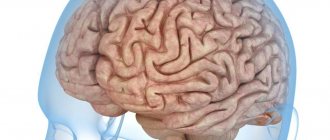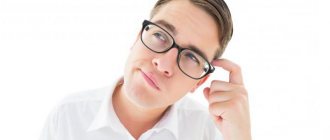“But he’s brainless, he doesn’t understand anything!”, “She’s stupid, she has no brains at all!”, “But those guys are smart, their brains work as they should!” As a rule, in everyday life, people remember the brain exclusively in the context of someone’s ability to think. Although from the school curriculum you should vaguely remember that the tasks of the brain are much broader than thinking and remembering.
You can improve your thinking skills in our Cognitive Science program, and today we will talk about the variety of functions of the human brain and how the human brain works. In the course of the presentation, we will move from simple to more complex, so as not to get confused in the intricacies of structure and functions.
Significance, role of the human cerebral cortex
In the article we will look at the localization of functions, sections, analyzers, fields, sections,
areas of the cortex of the cerebral hemispheres of the human brain (men, women).
Neurologists, neuropathologists, reflexotherapists, reflexologists identify 4 main provisions, in relation to the practical activities of a neurologist, of the modern doctrine of the localization of functions in the cerebral cortex. 1. Very complex morphological and functional differentiation of the cerebral cortex. The frontal lobe is more responsible for motor functions. The parietal, occipital and temporal zones are more responsible for sensitive functions.
2. Dynamics and relativity of localizations of functions of the cerebral cortex. A certain area of the cerebral cortex, providing one function, at the same time, in various combinations with its other fields, can participate in the implementation of various cortical functions and form new cortical connections. This is important in compensation processes in conditions such as damage to the cerebral cortex, disruption of the cerebral cortex, death or damage to the cerebral cortex, death, immaturity of the cerebral cortex.
3. Formation of special cortical areas in the process of practical activity.
Exercises to develop the right hemisphere
The right hemisphere of the brain is responsible for the following functions:
- Spatial orientation. The right hemisphere allows you not only to navigate the terrain, but also to put together a mosaic, assemble a construction set, etc.
- Musical abilities. In this hemisphere the perception of music is ensured, but musical education itself is obtained at the expense of the left hemisphere.
- Understanding metaphors and other people's imagination and fantasies.
- Developing your own fantasies, daydreaming.
- Artistic abilities.
- Emotionality.
- Mysticism and religiosity.
Essentially, the right hemisphere provides parallel processing of information based on intuition, images, symbols, without connecting with words and letters. It helps recognize faces. In addition, the hemisphere controls the movements of the left half of the body.
The following exercises are recommended:
- Visualization of the image. You need to relax and imagine a sheet of white paper in front of you. To begin with, using the power of imagination, it is painted in any favorite color. Any abstract drawing is mentally drawn on the sheet. Such training should be carried out daily, changing the plot, moving from simple images to complex paintings, rich colors.
- Game with a name. The child should be asked to fantasize by relaxing and closing his eyes. Let him mentally hear that someone is calling his name. We need to find out who this voice belongs to. The next step is which melody the name goes best with. Next, you can try to feel your name by touch, smell and taste. What is it like - soft, hard, fluffy, etc. After this, the child is taken out of this state and asked to talk about associations, encouraging any comparisons. You can ask them to draw what they saw in their imaginations.
- Mirror drawing. Frequent drawing, even in the absence of special talents, develops the right hemisphere. It is not the quality of the drawing that is important, but the desire to reflect some images on paper. We need to develop a flight of fantasy. The “Mirror Drawing” exercise is especially useful. Take 2 sheets of paper and pencils in both hands. You need to draw the same drawing or pattern with both hands at the same time. You should relax while performing the exercise.
- Playing a musical instrument. The guitar fits well. It is not at all necessary to know how to play it. It is enough to lightly pluck the strings, trying to reproduce a melody, and imagine that the idea was a success. If a child owns a musical instrument, then he should play it daily.
- "Ring". The exercise is very simple. Without looking at your hand, you need to alternately touch the fingertips of your left hand with your thumb, forming a ring. The exercise is done many times throughout the day.
Important! Exercises that load the left half of the body allow you to develop the right hemisphere. Similar to the technique described above, you can massage the base of the big toe of your left foot.
Function creates the center
According to Ivan Petrovich Pavlov: “Function creates the center!” In early childhood, the boundaries of the cortical centers are diffuse and less differentiated, and only as life experience is gained, a gradual concentration of functional zones occurs, and therefore in children of the first years of life, focal cortical symptoms are weakly expressed and general cerebral symptoms often predominate.
4. Significant differences in the localization of simpler and more complex functions. The simpler the function, the more accurately it is localized. Conversely, the most complex functions are determined by the integrative activity of the entire brain, therefore the concept of “cortical center” (section of the cerebral cortex, fields of the cerebral cortex, areas of the cerebral cortex, parts of the cerebral cortex) is in most cases relative and conditional. Simple cortical functions include sensory function, motor function, visual function, auditory function, vestibular function, olfactory function, and gustatory function. Complex cortical functions include speech, writing, reading, counting, praxis, gnosis, thinking, and memory.
Exercises to develop two hemispheres at the same time
It is very important for a child to ensure the development of both hemispheres of the brain. To do this, simple exercises are carried out to train them simultaneously:
- The left hand rests on the right shoulder, the head turns to the right, and the gaze is directed to a specific object. The head then slowly turns to the left to look over the left shoulder. The exercise is repeated in a similar way for the right arm and left shoulder.
- A sheet of paper is taken in both hands. They need to wave, simultaneously using the hands, elbows and shoulders.
- Starting position: hands on the back of the chair, one leg moves back, body leans slightly forward. A squat is done on one leg with the entire body weight transferred to it. Then, slowly the body weight moves to the back leg. After 5 repetitions, the legs change.
- One hand is clenched into a fist, and the palm of the other is completely straightened. Then, the hand movements change. The fist-palm cycle is performed slowly at first, and then the pace accelerates.
- The fingers of the right hand touch the nose, and the left hand touches the right ear. Then, there is a clap of hands, and the hands change places.
- The right hand is brought to the temple (“under the visor”), and the left hand shows the characteristic gesture “Cool!” Then the hands change places.
- On one hand, the fingers depict the letter V, and on the other, O. The hands periodically change places.
- With the fingers of one hand you need to show the “legs”, and with the other hand – the “horns”, periodically changing hands.
- Finger puzzles. The index and middle fingers are used on one hand, the little and ring fingers on the other. The fingers fit together to imitate puzzles.
- At the same time, on both hands, the thumb alternately touches the other fingers. Moreover, on one hand the exercise begins with the little finger, and on the other - with the index finger.
Important! The goal of joint training is to coordinate the actions of both hemispheres. When carrying out the exercises systematically, their synchrony and optimal relationship are established.
The human brain is a complex mechanism that requires special training for normal functioning. From early childhood it is necessary to take measures to improve it. The right and left hemispheres perform their own specific functions, and therefore the methods of their development also differ. Exercises to coordinate their work are especially important.
Localization of functions and symptoms
Carrying out topical diagnostics, a reflexologist, neurologist, neuropathologist, microneuropathologist, pediatric neurologist, adult neurologist determines not only the localization of damage to the cortical centers, but also the localization of symptoms. Simple cortical functions are associated with the projection plates of the cortex (fifth and fourth), which have a direct connection with the periphery and are the cortical sections of the analyzers. Complex cortical functions are associated with the associative layers of the cortex (second and third). The last layers are connected by horizontal fibers to other areas of the cerebral cortex within the same hemisphere and do not have direct access to the periphery. Commissural connections between the hemispheres passing through the corpus callosum are also of great importance in ensuring complex cortical functions.
Simple cortical functions are usually represented in both hemispheres of the brain. Complex cortical functions often have asymmetric representation in the right or left hemisphere of the brain. So, what are the fields, areas, areas, types of cerebral cortex, divisions, analyzers, parts of the cerebral cortex?
Anatomical features
Intermediate
The thalamus is egg-shaped and gray-brown in color. Structural unit - nuclei, which are classified according to functional and compositional characteristics.
The epithalamus consists of several units, the most famous of which is the grayish-reddish pineal gland.
The subthalamus is a small region of gray matter nuclei connected to white matter.
The hypothalamus consists of nuclei. There are about 30 of them. Most are paired. Classified by location.
Posterior lobe of the pituitary gland. The pituitary gland is a round-shaped formation, the location is the pituitary fossa of the sella turcica.
Finite
Unites the hemispheres, corpus callosum and striatum. The largest department by volume.
The hemispheres are covered with gray matter 1-5 mm thick. The mass of the hemispheres is about 4/5 of the mass of the brain. Convolutions and grooves significantly increase the area of the cortex, containing billions of neurons and nerve fibers arranged in a certain order. Underneath the gray matter lies white matter—the processes of nerve cells. About 90% of the cortex has a typical six-layer structure, where neurons are connected through synapses with each other.
From the point of view of phylogenesis, the cerebral cortex is divided into 4 types: ancient, old, intermediate, new. The main part of the human cortex is the neocortex.
The corpus callosum is shaped like a wide strip. Consists of 200-250 million nerve fibers. The largest structure connecting the hemispheres.
Stereognosis, stereognosis
Complex types of sensitivity are localized in the cerebral cortex at the level of the superior parietal lobule, where there is no somatotopy. Complex types of sensitivity include stereognostic sensitivity (stereognosis, stereognosis), two-dimensional spatial sensitivity, a sense of localization and discrimination. The visual projection zone (visual cortex) occupies the area of the calcarine sulcus - the inner surface of the occipital lobe. The auditory projection zone (auditory cortex) occupies the center of the superior temporal gyrus and Heschl's gyrus. The vestibular projection zone is located next to the auditory zone. The olfactory projection zone is localized on the inner surface of the temporal lobe, in the gyrus of the hippocampus. The gustatory projection zone is located next to the latter, as well as in the area of the tire and the Reili island.
Speech analyzer, Wernicke's center, Broca's center, speech function - sensory center
The speech function is provided by the sensory center ( Wernicke's center ), which is located in the posterior part of the superior temporal gyrus. When Wernicke's center is damaged, sensory aphasia occurs. The speech function is also provided by the motor center ( Broca's center ), which is located in the posterior parts of the inferior frontal gyrus. When Broca's center is damaged, motor aphasia occurs. With pathology at the junction of the temporal and occipital lobes, amnestic aphasia and semantic aphasia are formed. Speech areas of the cerebral cortex.
Soldiers of the invisible front
At the back of the brain is the cerebellum
.
Its volume is approximately one-eighth the size of the cerebral hemispheres. Despite its small size, this part of the brain controls coordination of movements
(the joint work of all muscles) and
the sense of balance
.
Thanks to the work of the cerebellum, a person can stand on his feet, maintain balance and move around. The brain stem
is located under the cerebral hemispheres and behind the cerebellum.
It connects the spinal cord and brain and controls all the functions that are necessary to maintain life in the body. The trunk is responsible for the involuntary work of muscles during breathing, heartbeat, food digestion and blood circulation. It works automatically and without interruption
.
How to prolong youth?
One of the mechanisms leading to aging is the death of nerve cells. The less a person strains his brain, the larger this process becomes. Find out how to stop this process and delay old age.
The brain stem is also responsible for sorting and distributing messages that the brain receives from the rest of the body.
Another notable area of the brain is the hippocampus
.
This paired formation, located in the temporal lobes of the hemispheres, controls memory
.
More precisely, by transferring information from short-term memory storage to long-term memory. The pituitary gland
is located on the lower surface of the brain - in a special bony cavity called the sella turcica.
The size of the pituitary gland is very small - no more than a pea. Its task is to control the production and release of all hormones
in the body.
Produces the pituitary gland and its own hormones - for example, growth hormone. The hypothalamus
is located practically in the geometric center of the brain.
It synchronizes the work of the nervous and endocrine systems of the body, working closely with the pituitary gland. For example, it is responsible for a kind of internal thermometer that maintains the temperature of the entire body
. If it increases, the hypothalamus sends a complex neurohormonal message that stimulates sweating. If it decreases, it gives a command for muscle tremors.
Praxis, praxis analyzer, praxis center
Praxis is the ability to perform purposeful motor acts. Praxis is formed during human life, starting from infancy, and is ensured by a complex functional system of the brain involving the cortical fields of the parietal lobe (inferior parietal lobe) and the frontal lobe, especially the left hemisphere in right-handed people. For normal praxis, the preservation of the kinesthetic and kinetic basis of movements, visual-spatial orientation, programming processes and control of purposeful actions is necessary. The defeat of the praxic system at one level or another is manifested by such a type of pathology as apraxia. The term "praxis" comes from the Greek word "praxis", which means "action". Apraxia is a violation of purposeful action in the absence of muscle paralysis and the preservation of its elementary movements.
Necessary conditions for child brain development
Nature has provided the human brain with a huge number of neurons that make up its core. Their diverse connections provide consciousness, thinking, memory, coordination and functioning of the entire organism. It is their formation that ensures the development of the brain.
The active process occurs until the child is three years old, after which the rate of development decreases significantly. Full physiological formation is completed by the age of 6-7, when a person is completely ready to perceive information, analyze it and conscious mental activity.
Researchers identify the following important factors influencing brain development:
- Speech. Verbal information received by the child becomes the main stimulant. The earlier and more language exposure an infant receives, the faster the brain develops. Verbal information stimulates the formation of connections for processing incoming information. It is important to understand that it is impossible to utter any word without hearing it at least once. Parental speech establishes vocabulary and communication skills in the first 2-3 years after birth.
- Stability and stress. The baby's brain instantly reacts to any external stimuli. A stable, calm environment provides normal conditions for development. Stresses that generate internal irritants become depressing factors for him. The child’s brain completely switches to such influences. Prolonged stressful situations lead to the production of cortisol and other dangerous hormones that change the entire brain structure.
- Emotions. Positive emotions in a child contribute to normal brain development. The caring attitude of parents and a favorable external environment create the basis for the formation of a response to future learning. It establishes trust and the necessary relationships between the baby and adults.
- Praise. Research has shown that praising a child's efforts between the ages of 1 and 3 stimulates a desire to broaden his or her horizons in the future. It is important to understand that rewarding diligence, not praising innate talents, has a positive effect.
- Cry. It has been established that the lack of response to a baby's crying disrupts normal brain development, increasing the impact of harmful stress. Parents' attention to their baby's crying lays the foundation for trust and affection.
There is considerable debate about the impact of television on a child's brain development. Most psychologists agree that it cannot be considered an assistant in this important process. Television information is practically not deposited in the infant brain. At the same time, the same information heard from the mother’s lips is absorbed well.
Memory, memory function
Various areas are involved in the implementation of the memory function. The frontal lobes provide active, purposeful mnestic activity. The posterior gnostic sections of the cortex are associated with particular forms of memory - visual, auditory, tactile-kinesthetic. The speech zones of the cortex carry out the process of encoding incoming information into verbal logical-grammatical systems and verbal systems. The mediobasal regions of the temporal lobe, in particular the hippocampus, translate current impressions into long-term memory. The reticular formation ensures optimal tone of the cortex, charging it with energy.
Thinking, thinking function
The thinking function is the result of the integrative activity of the entire brain, especially the frontal lobes, which are involved in organizing the purposeful conscious activity of a person, man, woman. Programming, regulation and control take place. Moreover, in right-handed people, the left hemisphere is the basis of predominantly abstract verbal thinking, and the right hemisphere is associated mainly with concrete figurative thinking.
The development of cortical functions begins in the first months of a child’s life and reaches its perfection by the age of 20.
Exercises to develop the left hemisphere
The human brain is designed in such a way that its hemispheres are endowed with different abilities. The left hemisphere is responsible for the following functions:
Analytical thinking, logic and reasoning. Facts are analyzed, numbers and mathematical symbols are recognized.
- Language abilities, understanding the literal meaning of words.
- Sequential, step-by-step processing of information.
- Mathematical abilities.
- Reading and writing abilities.
In addition to analysis and logical thinking, this hemisphere controls the movement of the right half of the body.
To develop the left hemisphere, the following exercises are recommended:
- Daily solution of mathematical problems with elements of logic. They are compiled taking into account the age of the child. You can give an example of a simple task. Two children (A and B) received a box of chocolates with 10 candies as a gift. One of them (A) ate some sweets from his box, and B ate all the rest in it. Question: how many sweets do the children have left between them? The answer is candy in the 20th, i.e. 10 pieces.
- Solving crosswords, chainwords, puzzles. You can pay attention to a popular trend - Sudoku.
- Physical exercise. Priority is placed on moving the right limbs and loading all types of muscles located on the right side of the body.
- Massage. Points that stimulate the functioning of the cerebellum have been identified. Massaging the point located at the base of the big toe on the right foot helps.
Important! For the development of the left hemisphere of the brain, training in logic and ingenuity is useful. It should be noted that the school curriculum is largely aimed at the development of this particular hemisphere.
Areas of the cerebral cortex
In subsequent articles we will focus on current issues of neurology: zones of the cerebral cortex, zones of the cerebral hemispheres, visual, cortical zone, auditory cortex, motor motor and sensitive sensory zones, associative, projection zones, motor and functional zones, speech zones, primary zones cerebral cortex, associative, functional zones, frontal cortex, somatosensory zone, tumor of the cortex, absence of the cortex, localization of higher mental functions, localization problem, cerebral localization, concept of dynamic localization of functions, research methods, diagnostics.
Cerebral cortex treatment
Sarclinic uses proprietary methods to restore the functioning of the cerebral cortex. Treatment of the cerebral cortex in Russia in adults, adolescents, children, treatment of the cerebral cortex in Saratov in boys and girls, boys and girls, men and women allows you to restore lost functions. In children, the development of the cerebral cortex and brain centers is activated. In adults and children, atrophy and subatrophy of the cerebral cortex, disruption of the cortex, inhibition in the cortex, excitation in the cortex, damage to the cortex, changes in the cortex, pain in the cortex, vasoconstriction, poor blood supply, irritation and dysfunction of the cortex, organic damage, stroke, detachment are treated , damage, diffuse changes, diffuse irritation, death, underdevelopment, destruction, diseases, perinatal encephalopathy and post-resuscitation encephalopathy, cerebral palsy, minimal cerebral dysfunction, delayed speech development, delayed psychomotor development, FMR, birth trauma. Cells and neurons of the cortex restore their work, structure and function are restored. The structure and activity of the cerebral cortex is restored, polypeptides and their content return to normal, the cortex and subcortex begin to work. In children, age-appropriate maturation of the cerebral cortex occurs. Unfortunately, under certain pathological conditions, death occurs, the death of cells in the cerebral cortex; in this case, it is not possible to restore the functioning of the cortex. On the website sarclinic.ru you can ask a doctor a question online for free. If the cerebral cortex is damaged, then with proper and adequate treatment it is possible to restore its functions.
Sign up for a consultation. There are contraindications. Specialist consultation is required.
Text: ® SARCLINIC | Sarclinic.com \ Sarlinic.ru Photo: © MedusArt / Photobank Photogenica / photogenica.ru The people depicted in the photo are models, do not suffer from the diseases described and/or all coincidences are excluded.
Related posts:
Accentuation of character in adolescents, types, test, methodology, correction in Saratov
Causes of urinary incontinence in women and men, treatment in Saratov
Urination, urination mechanism, why does it happen, does urinary incontinence happen?
Dysmorphomania, treatment of dysmorphomania in Saratov
Types of urinary incontinence, forms, international classification, treatment in Saratov, Russia

